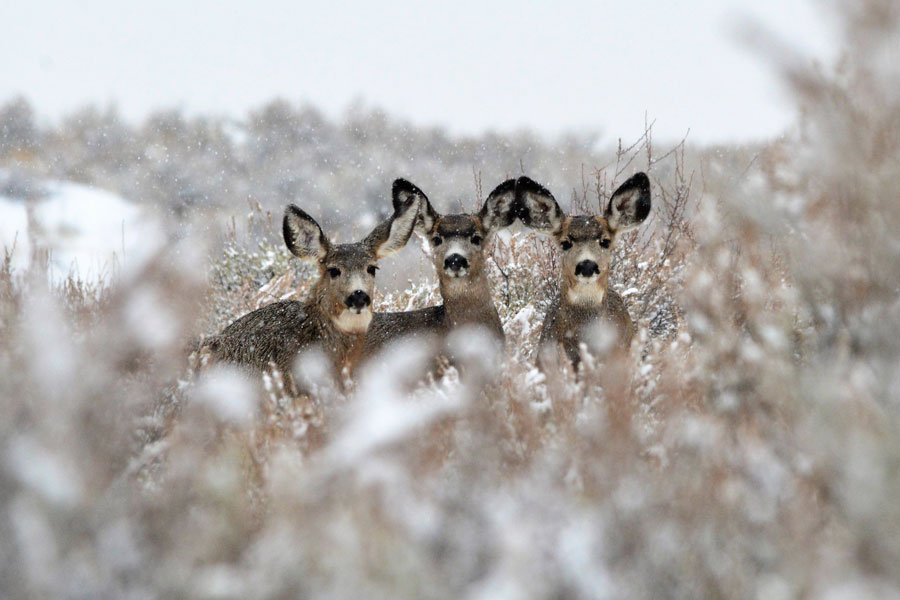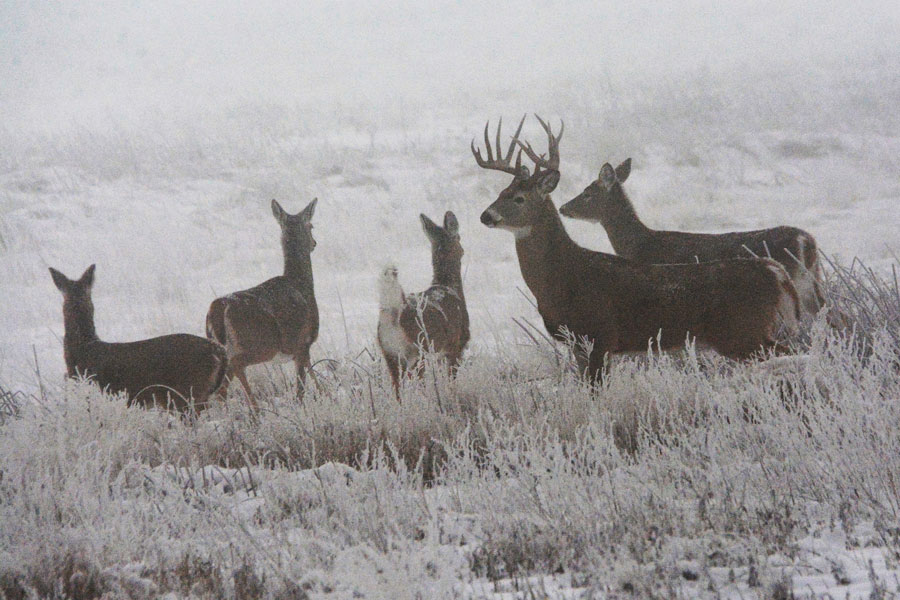Unusual wildlife migration patterns a result of late snowfall, and it’s causing problems for drivers
Published at
It is time for mule and white-tailed deer, along with elk and moose, to migrate from their summer range to lower elevations. It is also the time where cars and animals – big animals, to meet unexpectedly on the road. This week while traveling near Mackay in the pre-sunrise light, I glanced at a group of does and fawns in a field when a huge buck crossed the road. He missed me and I missed him. Blood and gut spots on the area roads show cars and big game are meeting each other, causing death on the highways.
My close missed-encounter reminded me of another one earlier this fall. Two of us were watching sandhill cranes gather to migrate when we saw a fawn white-tail running straight at us. As I tried to get pictures of it, I saw a coyote chasing the young deer. After seeing our vehicle, the coyote applied the brakes and ran back from where it had come from.
We were discussing what had happened when a doe, the mother of the fawn, came running directly toward us with the coyote right on her heels. Once again, the coyote put on the skids when it saw us. We had a great laugh about the experience.
With the annual rut beginning for deer, the bucks will be trying to gather the does and will throw caution to the wind as they chase the females. As one Fish and Game official put it, “it is their stupid time.”
The lack of snow has allowed the deer, moose and the elk, to remain in the high country, but if the predicted snow around Thanksgiving comes, the big game will migrate quickly to the low country. Popular places for them to gather will be in the White Sands north of St. Anthony and the Sand Dunes in Fremont County.
In the Mackay area, both white-tails and mule deer have moved into the town and the hay fields south of town and a large herd of elk have set up homes north of Mackay Reservoir.
Most of the hunting seasons will close by Nov. 30, but the migrating animals will create hazards for drivers, especially around dusk and dawn each day. If a lot of snow falls in Yellowstone Park, herds of elk up to 100 head will migrate across U.S. Highway 20 in Island Park.
Last winter, deer migrated back and forth across ID Highway 33, between Rexburg and Sage Junction where about 20 were killed by vehicles. This year, there have already been four deer and an elk killed in that area.
If you are looking for areas to observe and photograph the migrating and rutting animals, Camas National Wildlife Refuge is a place to see the White-tails, while the White Sands are good for mule deer after the hunts have ended. One of my favorite areas to look for herds of migrating elk is near the Sand Creek Ponds where hundreds of elk migrate off the Big Bend Ridge. It is also an area where you can observe moose and deer as well.
Be aware that many of the public lands close to all human traffic on Jan. 1, 2020 to protect the wintering big game animals. Also, be careful during the rut when buck deer and bull moose are on a short fuse and are very aggressive.
Living the Wild Life is brought to you by The Healing Sanctuary.





